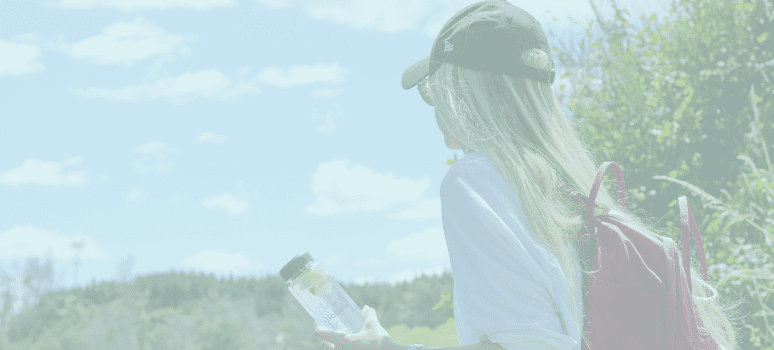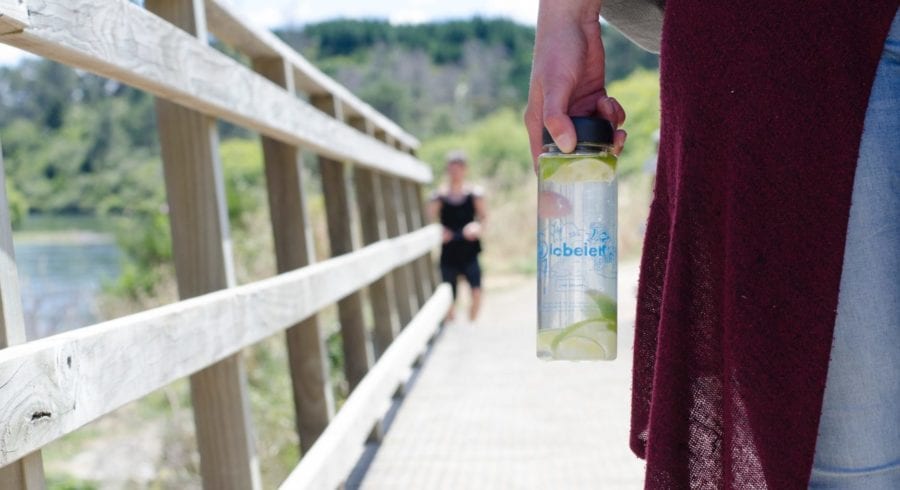
How many bottles of mineral water do you consume per year? Have you ever thought about whether that packaging is safe? The food industry uses compounds that can affect our health. We show you how to tell them apart.
Plastic is currently one of the planet's greatest enemies: every year we dump eight million tonnes of this non-degradable and highly polluting material into the sea. This, which is a direct problem for the environment, is also a problem for people; plastic affects the sustainability of the planet and therefore our health. But these are not the only risks. Do we think about the packaging we drink or eat from? Plastic is a petroleum derivative, polluting in its production and disposal. Moreover, the plastic contains toxic substances that pass into the material they contain (food, water¦).
Some plastics are more harmful to health than others, depending on the substances they are made of. We explain which are the most harmful components and how they can affect us:
- Bisphenol-A or BPAThe compound can be found in most plastics and plastics is one of the 800 substances known to be an endocrine disruptor.. That is, an external agent that is capable of altering a person's hormonal system.
Although in most cases there are no studies proving their negative effects on health, the fact is that The WHO published the list of these substances in 2013 and the only measure taken so far is a warning about their use. Bisphenol-A is only banned for baby bottles but is present in bottle caps or can linings.
The consumption of BPA may influence the fmale ertility, impair autoimmune function, in breast or prostate cancer, in early puberty, or cause chromosomal alterations.. For this reason, their use is strongly discouraged.
How can we see if the packaging we have chosen contains this material? On all containers you will find a triangle with a number from 1 to 7. Well, thehe least recommended for consumption is the one with the number 7BPA, a classification that includes numerous chemical compounds, almost all of which are toxic, including BPA. The reason why the health authorities warn about this substance without removing it from the market is questioned by many experts and we advise against its use.
- PhthalatesThese substances are added to the plastics to give them flexibility but they are present in many other materials such as nail polish, clothing and perfumes. In our homes, they can be found in plastic containers, in the plastic coating of some kitchen utensils or in non-stick materials and are dangerous because they migrate easily into food.
These substances also act as hormone disruptors; alter sex hormone levels, cause infertility and may have effects on the thyroid, allergies, obesity or the growth of cancer cells.
In 1999 the European Commission banned the use of these substances in toys for babies and children. And children. David Byrne, Commissioner responsible for health and consumer protection, and Erkki Liikanen, Commissioner responsible for enterprise and the information society, jointly presented this initiative stating that "We have received scientific opinions indicating that phthalates constitute a serious risk to human health, and we have decided to react immediately when scientists have concluded that the tests available to monitor these products do not provide a reliable guarantee of protection.
The reason why the use of these substances has not been banned is because there is no proven direct link between their use and disease. However, we do know that effects may appear in the long term and even cause alterations that are passed between generations without a cause being determined
Which plastics are safe for health?
When you buy a plastic container, make sure that the numbering inside the triangle drawing on the container is 5, 2 or 4.. Never consume food or bottled water if it is marked with the number 7, as this classification includes different toxic substances ... . There is only one exception as you will see below.
On the other hand, we advise against re-useespecially when the container has been subjected to temperature changes. It is also important not to store plastic containers near chemicals or heat sources.
So what packaging do we use?
The best container for water is a glass bottle. This is a safe option for our health and for the environment. If you can't use one, make sure when you shop at the supermarket that the plastic bottle is numbered 5, preferably, or 2 and 4 (try not to reuse them). A highly recommended type of material is tritan whichCuriously, it belongs to classification number 7 (it is the only non-toxic compound in this classification).

Also currently in use are the aluminium bottlesHowever, among these we should choose those made of anodised aluminium, which receives a special treatment so that the inner layer of the bottle does not peel off. In any case, we must protect these materials from knocks that could damage them, as this would increase the chances of aluminium transferring into the water.
At Biosalud Day Hospital advocates responsible consumption with our health and the environment.. Although our current consumption patterns do not make it easy for us, we can choose what foods we eat and how we eat them.


2 thoughts on “El plástico, un peligro para la naturaleza y un riesgo para nuestra salud”
i was looking for a plastic water bottle and i couldn't find the triangle with the number in it. where is the triangle located. thanks.
It depends on the bottle but it is possible that each country has its own regulations on this marking, especially outside Europe.
Comments are closed.